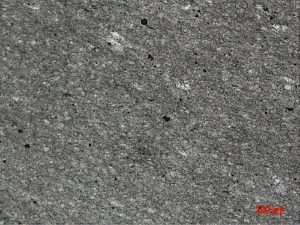
Lithotype
Colonnata Black Limestone
Common names
Nero di Colonnata
Rock classification
Sedimentary rock
This rock outcrops in different areas of Carrara province; however, the main outcrops of this black and grayish limestones occur along the western slope of the Cima d’Uomo and Monte Bandita and near the Carpenetella, Tacca and Canaloni quarries, along the homonymous canal close to the Colonnata village (Carrara).
The rock consists of a fine-grained black limestone in the process of initial crystallization. Geometrically, it represents the higher part of the sequence of crystalline dolomites of the Grezzoni Formation. The age of the formation is final Trias Retico and Infralias (rocks of uncertain age between the Triassic and Lower Giurassic).
In Firenze it was used mainly in the churchyard and in the decorations of the Basilica della Santissima Annunziata and in the interior pavement of the Cattedrale di Santa Maria del Fiore.
The composition is mainly calcitic (>90%) with low amount of dolomite and clay minerals.
Macroscopic description
Fine-grained black limestone; the presence of small amount of dolomite, the very fine grained and compact texture make it a rather tough material to cut.
Microscopic description
Calcareous biomycrite classified as a wackestone. Microfossils and calcitic veins are observable.

